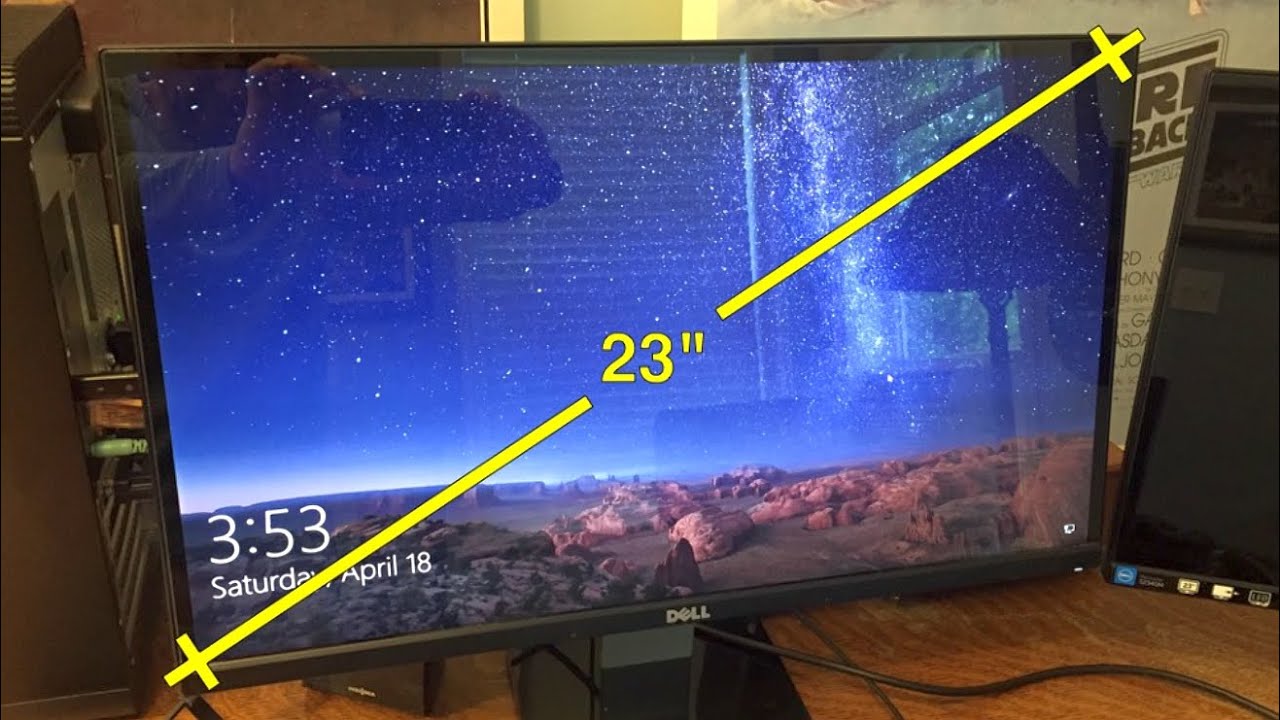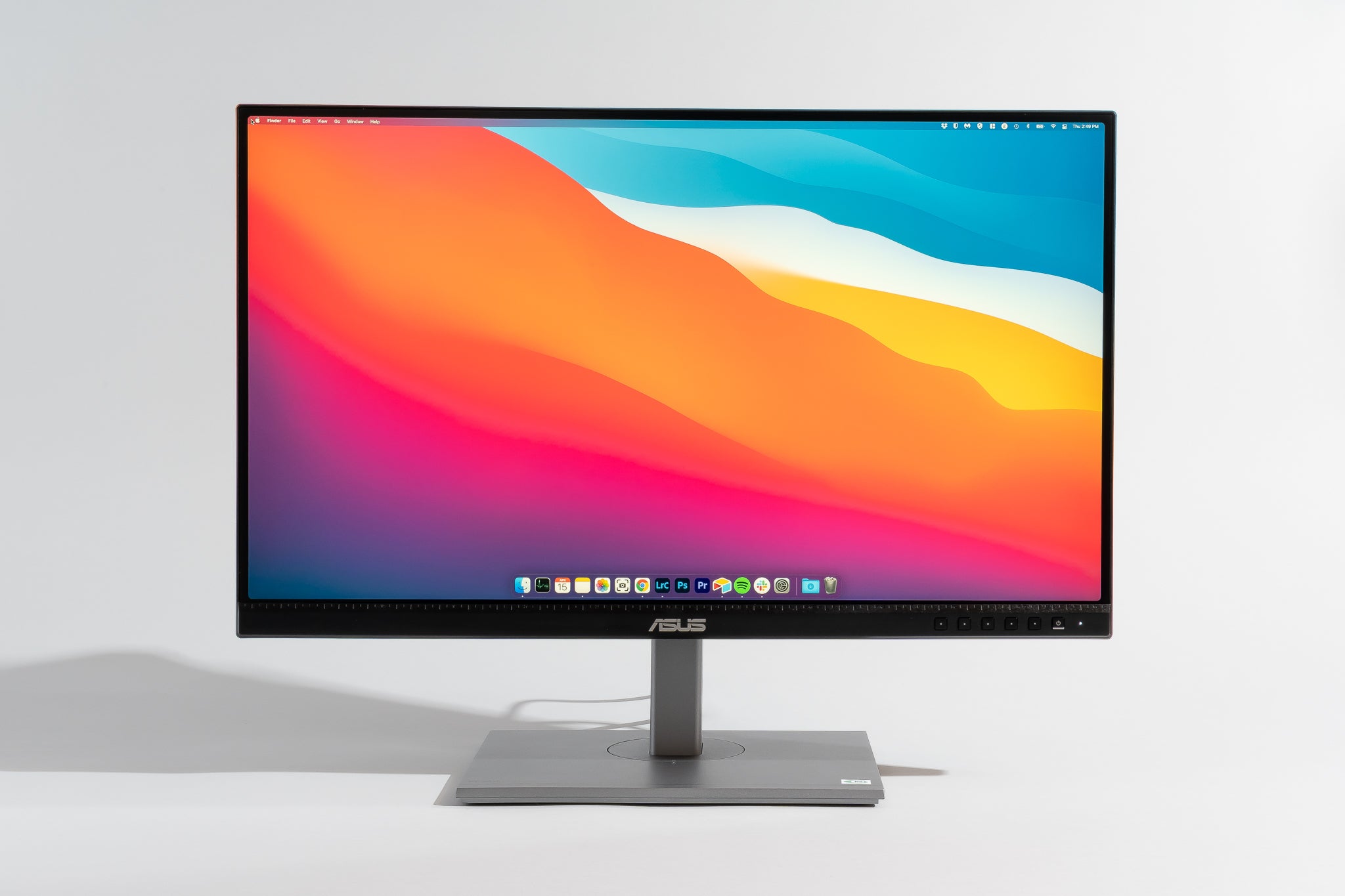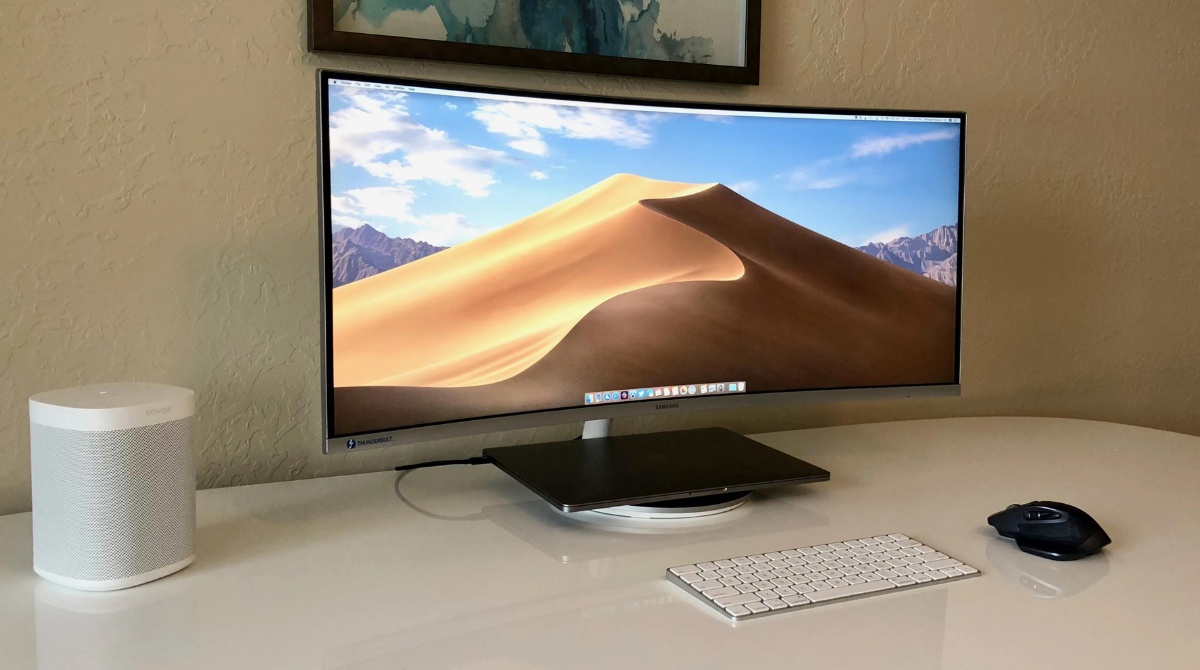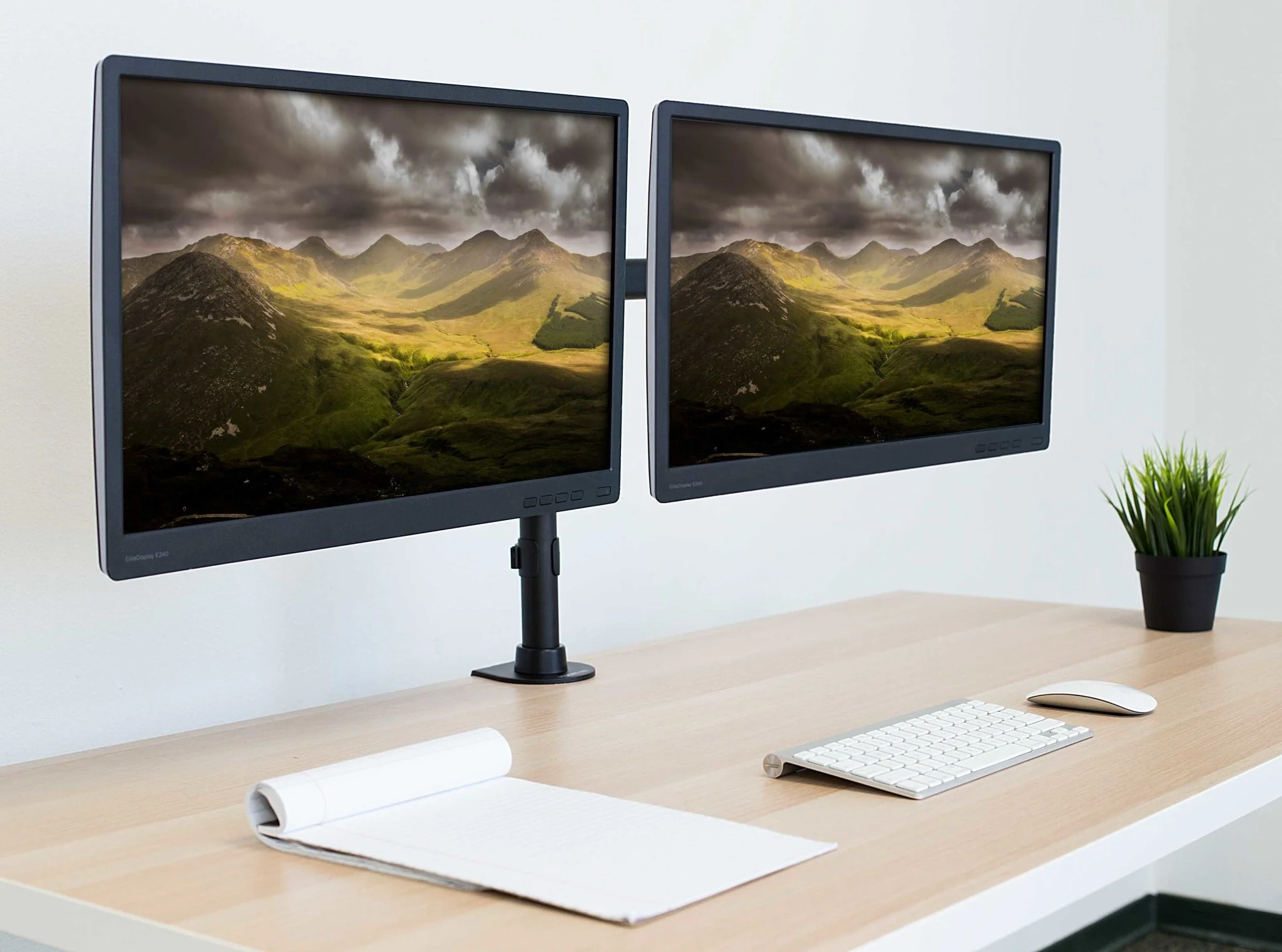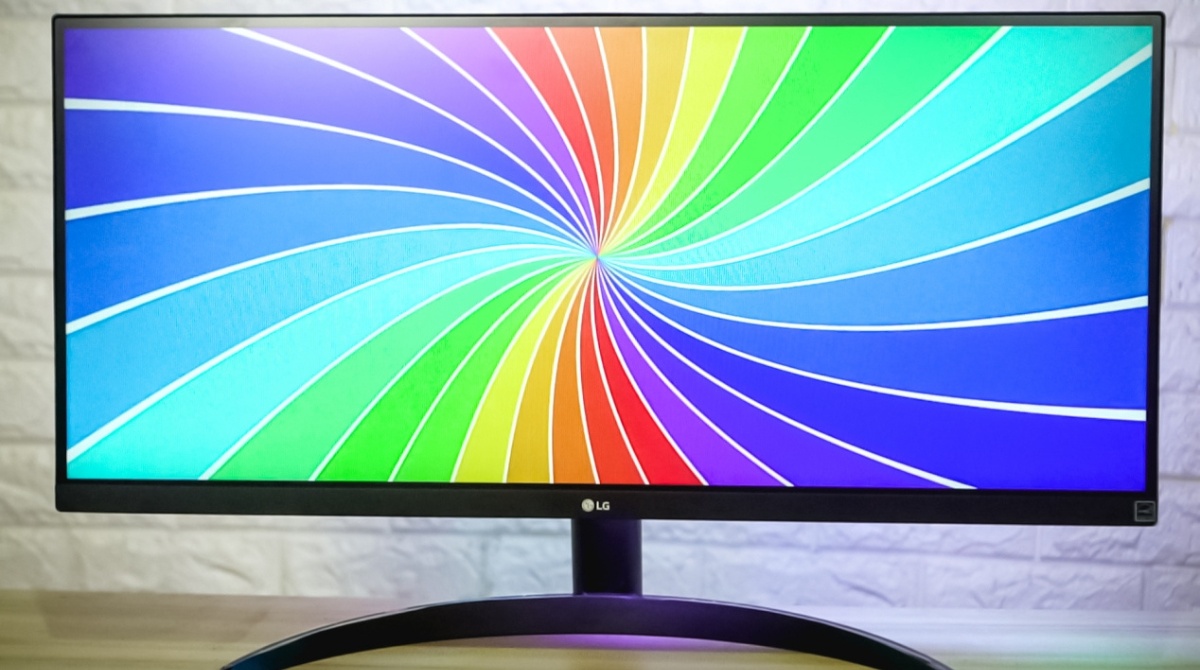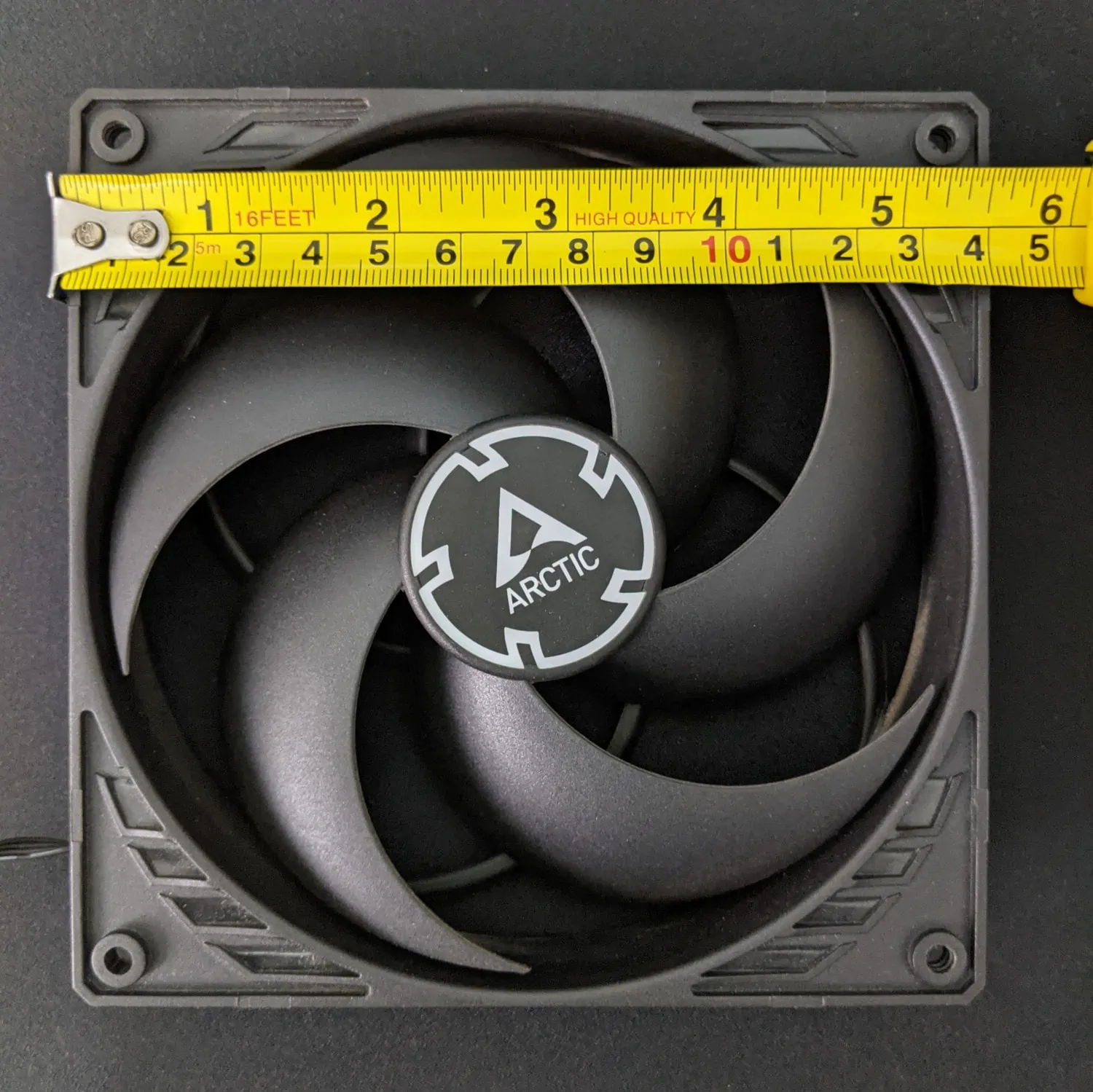Introduction
Welcome to our guide on how to measure computer monitor size. Whether you’re in need of a new monitor for work, gaming, or entertainment purposes, understanding how to accurately measure the size of a computer monitor is essential. The monitor size affects not only your viewing experience but also the space it occupies on your desk or in your home. In this article, we’ll walk you through the process of measuring the size of a computer monitor, including the screen diagonal, aspect ratio, and display area.
Measuring the size of a computer monitor is not as simple as measuring the width or height alone. The most common specification used to describe the size of a monitor is the screen diagonal. This measurement provides a more accurate indication of the size of the display, taking into account both the width and the height. Additionally, understanding the aspect ratio of a monitor is crucial, as it determines the proportions between the width and height of the screen. By knowing these measurements, you can make informed decisions when choosing the right monitor for your specific needs.
Whether you’re upgrading to a larger monitor or downsizing to a more compact one, accurately measuring the display area is vital. The display area refers to the actual visible space within the monitor, excluding any bezels or frames. This measurement can vary significantly among monitors with the same screen size, so it’s essential to take it into consideration when comparing different models.
In this guide, we’ll provide you with step-by-step instructions on how to measure the screen diagonal, calculate the aspect ratio, and determine the display area of a computer monitor. We’ll also cover additional considerations to keep in mind when measuring monitor size, such as screen resolution and bezel size. By the end of this article, you’ll have the knowledge you need to accurately measure and compare computer monitor sizes, helping you make an informed decision for your next monitor purchase.
Understanding Monitor Size
When referring to the size of a computer monitor, it’s important to understand that it’s not simply the physical dimensions that matter. Monitor size typically refers to the diagonal measurement of the display screen, which takes into account both the width and height of the screen. This screen diagonal measurement is commonly expressed in inches. For example, a 27-inch monitor means that the diagonal distance from one corner of the screen to the opposite corner is 27 inches.
It’s worth noting that the size of a monitor does not directly represent the size of the bezel or frame surrounding the screen. The bezel is the border that surrounds the display, and it’s not included in the screen size measurement. The actual display area, where the content is visible, may be smaller than the overall size of the monitor due to the bezel. That’s why it’s important to consider the display area when comparing different monitors.
Another aspect to consider when understanding monitor size is the aspect ratio. The aspect ratio is the proportion between the width and height of the screen. The most common aspect ratio for computer monitors is 16:9, which means that the width of the screen is 16 units for every 9 units of height. This ratio is widely used for multimedia content and offers a wide-screen experience. However, there are also monitors with different aspect ratios, such as 21:9 for ultra-wide displays or 4:3 for older monitor models.
The aspect ratio of a monitor can affect the way content is displayed. For example, a wider aspect ratio provides a larger viewing area for movies or games, while a more square-like aspect ratio is better suited for tasks that require more vertical space, such as working with documents or coding. It’s important to consider the aspect ratio that best suits your needs when choosing a monitor.
Understanding the basics of monitor size, including the screen diagonal, display area, and aspect ratio, will help you make informed decisions when selecting a new monitor. In the next sections, we’ll explore the step-by-step process of measuring these aspects to accurately determine the size of a computer monitor.
Measuring the Screen Diagonal
Measuring the screen diagonal is the first step in determining the size of a computer monitor. To accurately measure the screen diagonal, you will need a measuring tape or ruler. Here’s how you can do it:
- Turn off your computer monitor to ensure a clear view of the screen.
- Locate the bottom left corner of the screen and place the zero-point of the measuring tape or ruler against it.
- Stretch the measuring tape or ruler diagonally across the screen until you reach the top right corner. Make sure the tape or ruler follows the curved path of the screen.
- Read the measurement where the tape or ruler reaches the top right corner. This measurement represents the screen diagonal of your monitor.
It’s important to note that the screen diagonal measurement is usually given in inches. However, if your measuring tape or ruler uses a different unit of measurement, such as centimeters, be sure to convert the measurement to inches by using the appropriate conversion factor.
Keep in mind that the actual size of the monitor may differ slightly from the advertised screen size. This can be due to variations in manufacturing or differences in how manufacturers measure the screen. Therefore, it’s always a good idea to verify the actual screen size by measuring it yourself.
Measuring the screen diagonal allows you to have a baseline understanding of the size of your monitor. However, it’s important to also consider other factors such as the aspect ratio and the display area to get a complete picture of the monitor’s size. In the following sections, we’ll explore how to calculate the aspect ratio and measure the display area of a computer monitor.
Calculating the Aspect Ratio
The aspect ratio of a monitor is a crucial factor to consider when measuring its size. It defines the proportional relationship between the width and height of the screen. To calculate the aspect ratio, follow these steps:
- Measure the width of your monitor in inches or any other unit of measurement. Note down this measurement.
- Measure the height of your monitor in inches or any other unit of measurement. Note down this measurement as well.
- Divide the width measurement by the height measurement.
- Simplify the ratio if necessary. For example, if your result is 16:9, it is already in its simplest form. However, if the ratio is 20:10, you can simplify it to 2:1.
The resulting ratio represents the aspect ratio of your monitor. For example, if the width of your monitor is 16 inches and the height is 9 inches, the aspect ratio would be 16:9. This is the most commonly used aspect ratio for modern monitors, providing a wide-screen experience suitable for multimedia content.
It’s important to understand the aspect ratio of a monitor because it can significantly impact your visual experience. A wider aspect ratio can provide a more immersive experience for watching movies or playing games, while a more narrow aspect ratio might be better for vertical-intensive tasks like coding or reading long documents.
Having the aspect ratio information will help you select a monitor that aligns with your needs and preferences. Whether you’re looking for a wide-screen display or a monitor tailored for a specific task, understanding and calculating the aspect ratio is an essential step in accurately measuring a computer monitor.
Measuring the Display Area
Measuring the display area of a computer monitor is essential to understand the actual visible space available on the screen. This measurement takes into account the size of the monitor bezels or frames, which can vary among different models. Here’s how you can measure the display area:
- Start by measuring the width of the monitor screen, excluding the bezels. Measure from the left edge of the visible screen to the right edge.
- Next, measure the height of the visible screen, again excluding the bezels. Measure from the top edge to the bottom edge of the visible area.
- Multiply the width measurement by the height measurement to calculate the display area.
For example, if the width of the visible screen is 20 inches and the height is 12 inches, the display area would be 240 square inches. This measurement provides a more accurate representation of the actual working space on the monitor.
It’s important to note that the display area may differ even among monitors with the same screen size. This is due to variations in design, such as narrower or wider bezels, which can impact the overall display area. Keep in mind that a larger display area means more screen real estate for your work, while a smaller display area might mean sacrificing some usable space.
Understanding and comparing the display area of different monitors can help you make an informed decision when choosing the right monitor for your needs. Whether you require a large display area for multitasking or a compact monitor with a smaller footprint, measuring the display area provides crucial information about the actual usable space on the screen.
Comparing Different Monitor Sizes
When it comes to choosing a computer monitor, comparing different sizes is an important consideration. The size of a monitor can greatly impact your overall viewing experience and the functionality of your workspace. Here are some factors to consider when comparing different monitor sizes:
Screen Diagonal: The screen diagonal measurement is often the primary specification used to describe monitor size. A larger screen diagonal generally means a larger physical size and a more immersive viewing experience. However, it’s important to consider your available desk space and viewing distance to ensure the monitor fits comfortably in your setup.
Aspect Ratio: The aspect ratio of a monitor can vary among different models and sizes. A wider aspect ratio, such as 16:9 or 21:9, provides a greater viewing area for multimedia content, gaming, and multitasking. On the other hand, a more square-like aspect ratio, such as 4:3, might be preferred for tasks that require more vertical space or for specific professional applications.
Display Area: The actual display area, which is the visible space on the screen, is influenced by both the screen diagonal and the bezel size. Comparing the display areas of different monitors can give you a better understanding of the usable space you’ll have for your work or entertainment. Keep in mind that a larger display area provides more room for multitasking, while a smaller display area might be sufficient for specific tasks or limited desk space.
Resolution: Along with monitor size, it’s important to consider the resolution of the display. A higher resolution means more pixels on the screen, resulting in sharper and more detailed images. When comparing monitor sizes, consider the resolution that best suits your needs and the capabilities of your computer’s graphics card.
Ultimately, the choice of monitor size depends on your personal preferences, the tasks you’ll be performing, and the available space in your workspace. Consider factors such as screen diagonal, aspect ratio, display area, and resolution to make an informed decision that meets your specific requirements.
By comparing different monitor sizes and understanding the implications of each, you can select a monitor that enhances your productivity, provides an enjoyable viewing experience, and fits seamlessly into your workspace.
Additional Considerations when Measuring Monitor Size
When measuring the size of a computer monitor, there are a few additional considerations that can influence your decision. These factors can further enhance your viewing experience and ensure that the monitor fits well with your setup. Here are some additional considerations to keep in mind:
Screen Resolution: The resolution of a monitor refers to the number of pixels it can display horizontally and vertically. A higher resolution provides sharper and more detailed images. When measuring monitor size, consider the resolution that best suits your needs and the tasks you’ll be performing. Higher resolutions, such as 4K or QHD, are ideal for graphic design, photo editing, and gaming, while lower resolutions may be sufficient for general computer usage.
Bezel Size: The bezel is the frame that surrounds the screen. While it doesn’t contribute to the actual display area, the bezel size can impact the overall aesthetic appeal and practicality of the monitor. Narrow bezels offer a more seamless and immersive viewing experience, especially when using multiple monitors in a multi-display setup. Additionally, smaller bezels can help minimize distractions and provide a sleeker design.
Ergonomics: Consider the ergonomic features of the monitor when measuring its size. Features such as adjustable height, tilt, and swivel can enhance your comfort and reduce strain on your neck and eyes. Assess whether the monitor’s size and design allow for easy adjustment and positioning to suit your preferred viewing angle and comfort level.
Connectivity Options: When measuring monitor size, it’s also important to consider the available connectivity options. Ensure that the monitor has the necessary ports, such as HDMI, DisplayPort, or USB, to connect to your computer or other devices. Additionally, check if the monitor supports any specialized connectivity features you may require, such as Thunderbolt or USB-C.
Price and Budget: Finally, consider your budget and the price range of monitors of different sizes. Larger monitors with advanced features tend to be more expensive. Assess your needs, prioritize the features that are most important to you, and determine a budget that aligns with your requirements.
By considering these additional factors when measuring monitor size, you can make a more informed decision and select a monitor that not only fits your desired size but also offers the desired resolution, bezel size, ergonomics, connectivity options, and price range.
Conclusion
Accurately measuring computer monitor size is essential when selecting a new monitor for your workspace. By understanding how to measure the screen diagonal, calculate the aspect ratio, and determine the display area, you can make informed decisions that align with your needs and preferences.
Remember that the screen diagonal provides a baseline measurement for the overall size, while the aspect ratio determines the width-to-height proportion. Taking into account the display area, which considers the visible screen space minus the bezels, allows for a more accurate comparison of different monitor sizes.
Additionally, consider additional factors such as screen resolution, bezel size, ergonomics, connectivity options, and budget when measuring monitor size. These considerations can further enhance your viewing experience, improve comfort, and ensure compatibility with your setup.
Ultimately, the right monitor size will depend on your specific requirements and personal preferences. Whether you need a larger screen for immersive gaming, a wider aspect ratio for multitasking, or a compact monitor with a smaller footprint, understanding how to measure monitor size empowers you to make the best decision for your needs.
Take the time to measure and compare different monitor sizes while considering the factors discussed in this article. By doing so, you can find the perfect monitor that enhances your productivity, entertainment, and overall computing experience.







